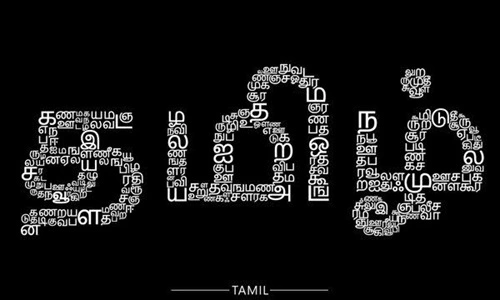Well, simply put, formal communication is communication where information is shared within established channels and rules and structures are observed. It is what we do when we produce a memo to pass up the hierarchy or fire off an official email. It is more formal and business-like. And yes, formal communication is usually written.
It’s the kind of communication that has a clear chain of command, which is precisely targeted to the recipient, and meticulously crafted and delivered for the purpose of being understood exactly the way that the communicator intends. Formal communication is highly controlled and governed, according to the time when it ought to be shared, as well as the content of the message that ought to be shared. It’s not just social chatter, but a kind of communication that is planned in advance to help with decision-making and keep things running smoothly.

Lets introduce you to the possible advantages and disadvantages of formal communication:
Advantages of Formal Communication
1. Super Clear Messages
You see, formal communication always gets the point across. Standard templates and approved channels cut down on noise, and make it likely that your message will get heard and understood. The writing in a formal memo or email will be precise, and you will know exactly what is being communicated, like in business, getting the facts straight determines the best course of action.
2. Boosts Efficiency
Efficient communication keeps any organization functioning smoothly. Formal communication gets this exactly: it provides a framework for people to communicate in an organized manner. Formal communication channels take the form of emails, reports, or meetings, and by passing information through them, the flow is always kept standard and smooth.
3. Sets Clear Roles and Hierarchies
Another major advantage of formal communication between staff is that it builds the team structure of an organization by stating who does what. This is conducted by keeping a hierarchy. Simply put, this structure helps maintain order and ensures tasks are assigned properly. Knowing the duties of each person as well as how to tackle them maintains accountability as well as respect for the group within a team.
4. Keeps Permanent Records
And yes, the formal mode of communication is also documented. Documentation is important to keep records of things. Meeting minutes, official emails, or business reports are examples of documents. These documents are written records, which you can always refer to later. This is important for legal and compliance reasons, as you will be safe in any disputes and audits.
5. Makes You Look Professional
When we’re trying to work effectively in a business context, it’s important to maintain professional communication. One benefit of keeping formal communication alive is that it helps to keep us sounding professional, always. Our words are a very important part of how we present ourselves, and when we communicate formally, whether that’s writing a well-structured memo, or speaking to someone on the phone, we present the best possible professional image. This helps any organization and any business partners see you as professional, making them feel more confident in you.
6. Enhances Team Coordination
Lastly, it is 100% true that good coordination can help companies to reach organizational goals. Formal communication makes it easier by giving clear instructions and expectations. For instance, if the guidelines of a project are announced by the management through official communication channels, it will help and assure every team member about their role and responsibilities.
Disadvantages of Formal Communication
1. Too Stiff and Structured
One of the disadvantages of formal communication is its rigidity. When they stick rigidly to protocols and prescribed channels, there is likely to be a too formal and bureaucratic atmosphere. Rigidity can hamper creativity and innovation, because people may feel constrained by it and be unable to spontaneously come up with new ways of doing things, you know.
2. Eats Up Time
And yes, formal communication is the most time-consuming. Writing long reports, and official emails, and setting up meetings require much time and make workers tired. Therefore, formal communication slows down decision-making, especially in an environment where speed is critical and a timely response is necessary. And this can very well lead to some crucial information not spreading quickly, making the organization less responsive.
3. Not Flexible Enough
In addition to rigidity, another drawback to formal communication is that, because of its dependence on standardized protocols, it is not easily adjustable to changing situations. As a result, it is difficult to react quickly to sudden problems and emergencies. For example, during a crisis, the formal communication process might delay the dissemination of crucial information, making the situation worse.
4. Creates Hierarchical Gaps
It is true that formal communication tips the scales in favor of the hierarchy in an organization. Formal communication is a clear signal that I am on a superior level than you. Hence, the boss might not be willing to communicate on a horizontal level. If the CEO is not communicating horizontally, then nobody else might want to. This limiting communication to a vertical level results in a rigid system of command and ensures that lower-level employees are unlikely to raise their concerns.
5. Can Lead to Misunderstandings
As good as it can be, formality in communication can also cause misunderstanding, well, sometimes. it is not difficult to perceive that official documents with formal language and phrases used in them, and complicated rules stated in writing can be difficult for all people to grasp, you know?
6. Sounds Authoritarian
See, if all communication is formal, then authority can become cold and authoritarian. This can have a devastating effect on employee morale and engagement over time. The impact of formal communication is to make instructions and feedback less than human. Instead of answering to a manager who looks out for their interests, workers could feel like they are responding to an objective process engine.
Quick Comparison Between Advantages and Disadvantages of Formal Communication
| Advantages | Disadvantages |
| Clear and precise messages | Pretty rigid and bureaucratic |
| Improves organizational efficiency | Time-consuming |
| Defines roles and hierarchy | Lacks flexibility |
| Maintains permanent records | Reinforces hierarchical gaps |
| Projects a professional image | Can cause misunderstandings |
| Enhances team coordination | May feel authoritarian |



